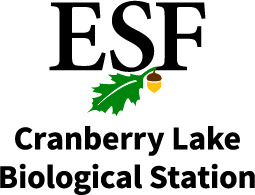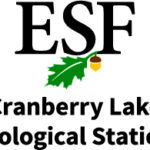
For over 100 years Cranberry Lake Biological Station has served as a source of ecological knowledge and inspiration. Generations of students have learned from the land, explored their interests, and built lasting bonds with other students. CLBS is a place where student aspirations take root and career paths are launched. It is also a hub of research with over 115 peer reviewed publications crediting CLBS. Building on this tradition our mission is to provide learners with exceptional field experiences, further ecological understanding of the Adirondacks, engage with the broader scientific community, ensure diverse communities are supported in field studies, and to engage with local communities.
Located in the Adirondack region of New York State, Cranberry Lake Biological Station (CLBS) is surrounded by Adirondack Wild Forest and Wilderness lands. It is isolated by the absence of roads, and can only be accessed by boat, which adds to the experience of the great wilderness adventure.
Cranberry Lake is the third largest body of water in the Adirondacks. Its environs are ideally suited for a biology summer program. Surrounded by rolling hills and dotted with numerous small ponds, bogs and stream drainages. Since 80 percent of the shoreline is in state ownership, the lake remains nearly pristine.
Much of the original forest cover in the region was harvested a century ago; today a rich variety of community types occupies those sites as the vegetation reverts to mature forests. The remaining old-growth forests nearby also provide students with examples of climax ecosystems. The area also provides easy access to a wide range of other ecosystems, ranging from bog to alpine vegetation. This mosaic of forest types and ecosystems provide students with the opportunity to explore and understand ecological forces and factors that shape ecosystems.
Facilities include a wireless campus, four classroom-laboratories; a computer cluster; field and laboratory equipment; a dozen power boats; dining facilities for 120; faculty quarters and cabins; an administration building; 12 cabins housing six to eight students each; a recreation hall; and several smaller, supporting buildings.
-

- North America
- 437 D Columbian Road
- Cranberry Lake
- 12927
- United States
- New York
- 44
- 74
- emarsena@esf.edu
- https://www.esf.edu/clbs/index.php
- 1915
- 2021
- Yes
- State University of New York College of Environmental Science and Forestry
- 1 Forestry Drive
- Syracuse
- 13210
- United States
- New York
- Emily Arsenault
- emarsena@esf.edu
- CLBS Director
- Dr. Emily Arsenault
- emarsena@esf.edu
- Terrance Caviness
- tcaviness@esf.edu
- emarsena@esf.edu
- $0 - $50,000
- 101-500
- No
- Yes
- 3-5
- 0
- 50+
- 0
- Yes
- On Grid
- 41-60 minutes
- Yes
- Yes
- Onsite public programs
- Yes
- Yes
- Terrestrial
- Temperate Forest
- 751-1500 meters
- 1501-3000 meters
- D (continental)
- Yes
- Rural
- Yes
- Yes
- Yes
- Yes
- 15
- 80
- 5
- Year Founded
- 1915
- Year Joined OBFS
- 2021
- Size of Field Station (hectares)
- 101-500
- FSML Web Address
- https://www.esf.edu/clbs/index.php
- Private nonprofit organization?
- No
- Universities affiliated / Parent Organization
- State University of New York College of Environmental Science and Forestry
- Federal, state, or local governmental partners?
-
No
- Member of the Virtual Field
- No

